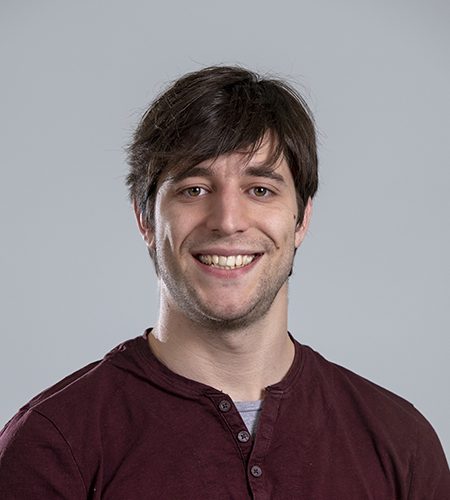IMDEA Networks

PhD Thesis defense: Initial access and beam-steering mechanisms for mmWave wireless systems

Joan Palacios, PhD Student, IMDEA Networks Institute and University Carlos III of Madrid, Spain
PhD Defense
Future millimeter-wave networks will support very high densities of devices and access points. This vastly increases the overhead required for access point selection and beam training. Due to unfavorable radio propagation, millimeter wave (mmWave) systems will exploit largescale MIMO and adaptive antenna arrays at both the transmitter and receiver to realize sufficient link margin. Beamforming is vital to overcome the high attenuation in wireless millimeter-wave networks. It enables nodes to steer their antennas in the direction of communication. Fortunately, the quasi-optical properties of millimeter-wave channels make location-based network optimization a highly promising technique to reduce control overhead in such millimeter-wave WLANs.
In this thesis we present tools to improve mmWave systems. The thesis begins with a small introduction in the first chapter. The synthesis of sector beam patterns with antenna arrays is a widely investigated topic in the literature because of its myriad of applications, ranging from massive multiple-input multiple-output (MIMO) to cell sectorization in cellular networks. Thus, we start in the second chapter by designing an effective lightweight sector beam-pattern design to use it as a baseline for hybrid analog-digital structures that we will further explore later, this is important to know the radiation properties we want to aim for the antennas to have in order to steer the connection link in the proper direction or range of directions. The higher propagation loss and unfavorable atmospheric absorption make data transmission over relatively long distances a serious challenge at mmWaves.
In the third chapter we deal with practical constraints of mmWave transceivers and propose a novel, geometric approach to synthesize multi-beamwidth beam patterns that can be leveraged for simultaneous multi-direction scanning, this allows for the system to be more efficient in terms of synthesizing/gathering information to improve the communication. Then we make use of this multi-direction scanning to create a beam training protocol which effectively accelerates the link establishment by exploiting the ability of mobile users to simultaneously receive from multiple directions, by learning the appropriate directions for communication we can tune the antenna to exploit them.
In the fourth chapter we propose smart beam training and tracking strategies for fast mm-wave link establishment and maintenance under node mobility. We achieve this by leveraging the ability of hybrid analog-digital transceivers to collect channel information from multiple spatial directions simultaneously and formulate a probabilistic optimization problem to model the temporal evolution of the mm-wave channel under mobility, this one makes use of the learnt channel information and evolution models to improve the beam-training process in which the devices need to learn about the channel before they can communicate.
Then, in order to be able to apply all these techniques to commercial devices without full information in the fifth chapter we propose a mechanism to extract full channel state information (CSI) regarding phase and magnitude from coarse signal strength readings on off-the-shelf IEEE 802.11ad devices, the requirements for this are simple signal magnitude measurements such as SNR or RSS together with mathematical tools based in harmonic analysis to the extraction of the desired channel properties. Using this CSI, transmitters dynamically compute a transmit beam pattern that maximizes the signal strength at the receiver, this method is designed to make a direct use of the channel state information previously computed in a smart way without incurring into tedious unnecessary measurements. Due the fact that channel properties and antenna design at 60GHz are ideal for path angular information extraction, following an almost ideal geometric channel model we present in the sixth chapter some localization methods specifically designed for the 60GHz band, these are based on angle difference of arrival information and due their ability to estimate the surrounding environment require no input being ideal for applications that need working without a proper calibration such as navigation in an unknown environment such as an office or virtual reality fast deployment. These location algorithms also aim to be very useful for channel estimation and prediction since the channel properties at 60GHz resemble a sparse geometric channel.
And that’s exactly what we do in the seventh and last chapter, we merge the ideas presented in this thesis and by extracting channel state information from off-the-shelf routers we estimate the user location to manage a location aware beam-training and device handling method. The resulting scheme can predict blockage, optimize access point association, and select the most suitable antenna beam patterns while significantly reducing the beam training overhead. This one is able to anticipate changes in the communication link and anticipate them aiming to maximize the average throughput in the immediate future by selecting the proper access point to communicate while narrowing the training overhead.
About Joan Palacios
Joan, finished his Bachelor degree of mathematics in 2015 from the “Universitat de València” in Spain.
He joined IMDEA on September 2015 as a PhD Student.
The thesis defense will be conducted in English. Given the coronavirus crisis, the thesis defense will be online.
PhD Thesis Advisor: Dr. Joerg Widmer, IMDEA Networks Institute, Madrid, Spain.
University: University Carlos III of Madrid, Spain
Doctoral Program: Multimedia and Communications
PhD Committee members:
- President: Dr. Edward Knigthly, Sheafor-Lindsay Professor of Electrical and Computer Engineering and Computer Science at Rice University, United States.
- Secretary: Dr. Eva Rajo Iglesias, Full Professor at University Carlos III of Madrid, Spain.
- Panel members: Dr. Sundeep Rangan, Professor at New York University, United States.
More info
- PhD thesis: Initial access and beam-steering mechanisms for mmWave wireless systems
- IMDEA Networks Publications: Theses
- PhD Students at IMDEA Networks
- Alumni Network

